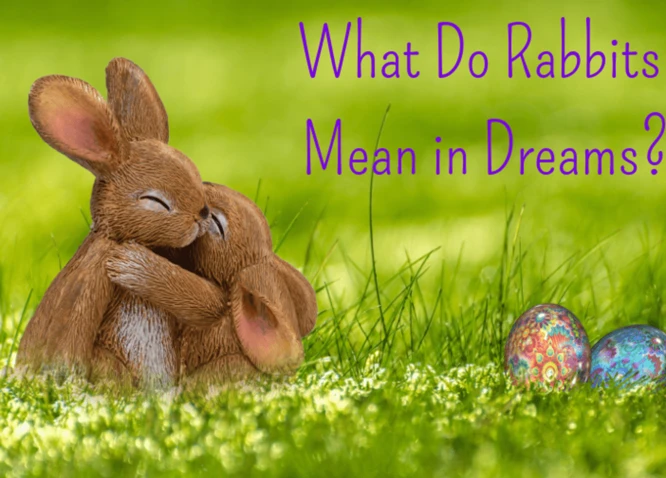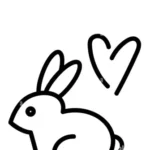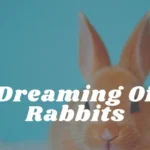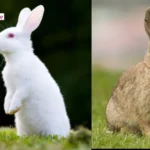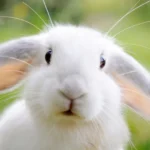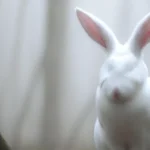Do bunnies dream? It’s a question that has puzzled pet owners and scientists alike, sparking curiosity about the inner world of these adorable creatures. We often wonder if rabbits, with their expressive eyes and playful demeanor, experience the same fantastical adventures in their sleep as we do. In this article, we will delve into the mysteries of rabbit dreams, exploring their sleep cycle, theories on bunny dreams, and how we can interpret their dream-like behaviors. So, join us on this whimsical journey as we unravel the secrets of the dream realm in our furry friends.
Why Do We Dream?
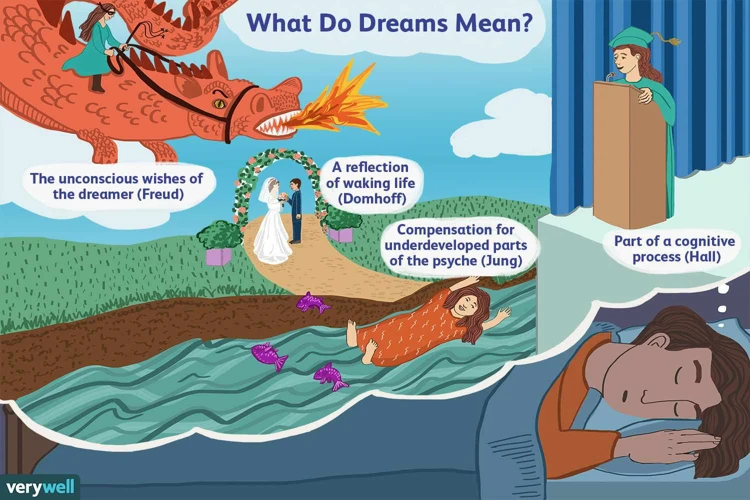
- Intriguing Theories: The fascination with dreams stems from the numerous theories surrounding their purpose and meaning. Some researchers believe that dreams serve as a way for the brain to process emotions, memories, and experiences, helping us make sense of our waking lives.
- Unconscious Desires: According to psychoanalytic theories, dreams can be a manifestation of our deepest desires, fears, and conflicts. Sigmund Freud suggested that dreams provide a window into our unconscious mind, often representing symbolic representations of unfulfilled wishes or repressed emotions.
- Problem-Solving: Another popular theory suggests that dreams serve a problem-solving function. During sleep, our brain continues to work on unresolved issues, allowing us to find creative solutions or gain new perspectives on challenges we face.
While these theories offer insight into human dreaming, do bunnies experience the same phenomena? Let’s explore the rabbit sleep cycle and uncover the mysteries of bunny dreams.
Exploring the Rabbit Sleep Cycle
Rabbits have a fascinating sleep cycle that differs from humans. Here are some key aspects of the rabbit sleep cycle:
- Awake Time: Rabbits are crepuscular animals, which means they are most active during dawn and dusk. They tend to spend a significant portion of their waking hours foraging, exploring, and playing.
- Napping: Rabbits take short naps throughout the day, usually lasting anywhere from a few minutes to a couple of hours. These naps help them conserve energy and remain alert to potential dangers.
- Light Sleep: During their napping periods, rabbits enter into a light sleep phase. Their ears remain erect, and they are receptive to sounds and movements in their environment.
- Deep Sleep: Rabbits experience deep sleep episodes, typically during the late night and early morning hours. During deep sleep, their muscles relax and twitch, entering a state of complete relaxation and rest.
Understanding the rabbit sleep cycle provides valuable insight into how dreams may factor into their sleep patterns. Let’s explore the theories surrounding bunny dreams and see if they experience similar dream-like states as humans.
Theories on Bunny Dreams
When it comes to understanding bunny dreams, several theories have emerged to unravel this intriguing phenomenon. One theory suggests that rabbits may dream as a way to process their daily experiences and memories, just like humans. They may fantasize about their favorite activities, hopping through meadows or munching on fresh greens. Another theory proposes that bunny dreams serve an instinctual purpose, helping them practice survival skills or prepare for potential threats in their environment. While we can’t confirm the specifics of their dream content, observing their dream-like behaviors during sleep, such as twitching or running in place, may shed some light on their dream experiences. So, let’s dive deeper into interpreting the fascinating world of rabbit dreams and uncover the symbolism behind their nocturnal adventures.
Interpreting Rabbit Dreams
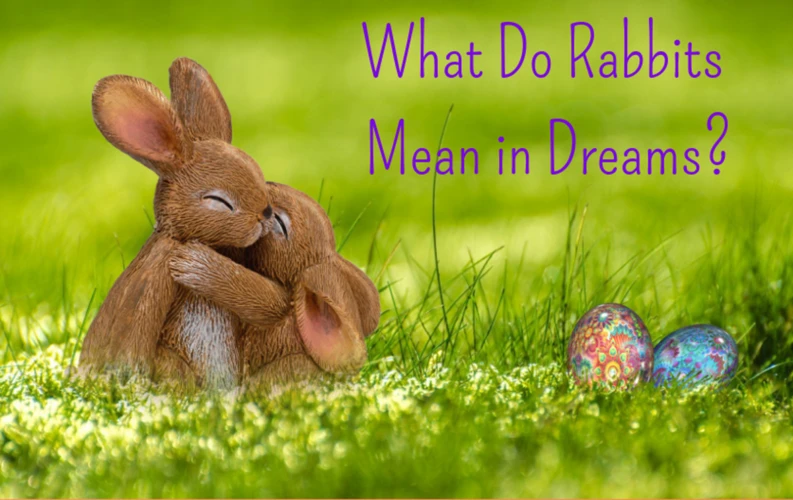
Common Dream Symbols:
Bunny dreams may be filled with symbols that can offer insight into their subconscious thoughts and emotions. For example, if a rabbit is dreaming about hopping freely in a lush meadow, it could indicate a sense of joy and freedom. On the other hand, a dream where a bunny is hiding or feeling fearful may represent a sense of vulnerability or anxiety.
Understanding Bunny Nightmares:
Just like humans, rabbits may also experience nightmares. If your bunny is displaying signs of distress during sleep, such as twitching or thumping its hind legs, it could be having a particularly vivid or disturbing dream. Providing a soothing environment and gentle reassurance can help ease their fears and promote a sense of safety.
Interpreting bunny dreams can offer valuable insights into their emotional well-being. Let’s dive deeper into the fascinating world of rabbit sleep to understand the connection between bunnies and their dreams.
Common Dream Symbols
When it comes to interpreting rabbit dreams, understanding common dream symbols can provide valuable insights into their subconscious experiences. While bunnies can’t explicitly communicate their dreams to us, certain behaviors can suggest the presence of dream-like states. One common symbol is the binky, a joyful behavior where a rabbit energetically jumps, twists, and spins mid-air. This could indicate a dream filled with happiness and excitement. Another symbol is the tail wiggle, where a rabbit’s tail wiggles rapidly while they rest. This is often seen as a sign of contentment, possibly indicating pleasant dreams. By observing these dream-like behaviors, we can begin to unravel the hidden world of rabbit dreams and gain a deeper understanding of their experiences.
Understanding Bunny Nightmares
- Physical Discomfort: Just like humans, rabbits may experience nightmares due to physical discomfort. This could include discomfort from a health issue, an uncomfortable sleeping environment, or even external disturbances such as noise or bright lights.
- Emotional Stress: Rabbits, despite their seemingly carefree nature, can also experience emotional stress that may manifest in nightmares. Changes in their environment, such as a new habitat or the presence of a predator, can trigger anxious dreams.
- Traumatic Experiences: Rabbits have excellent memory retention, and traumatic experiences can linger in their minds. Nightmares may be a result of replaying or processing distressing events they’ve encountered, such as a preying incident.
Understanding and addressing the causes of bunny nightmares is crucial for promoting their overall well-being. By creating a calm and secure sleeping environment, you can help minimize these unsettling dreams and ensure a more restful slumber for your furry companion.
Rabbits and REM Sleep
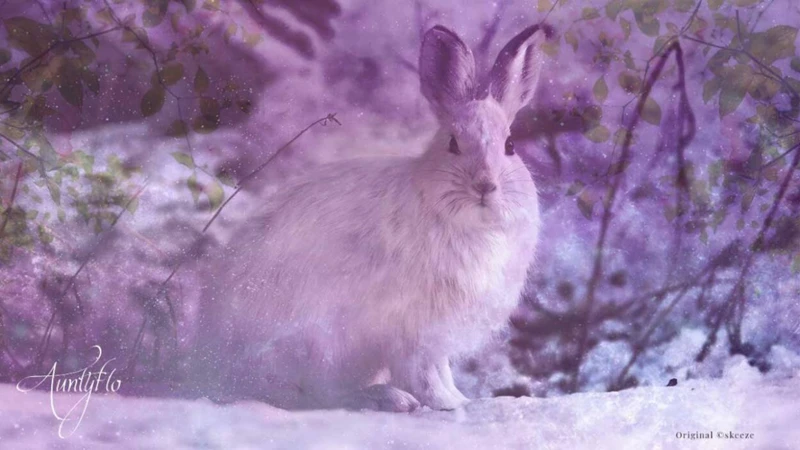
When it comes to sleep, rabbits exhibit a unique pattern known as REM sleep, or Rapid Eye Movement sleep. REM sleep is characterized by rapid eye movements, increased brain activity, and vivid dreaming in humans. While the exact nature of bunny dreams remains a mystery, researchers have observed that rabbits also experience REM sleep. During this phase, their eyes twitch, and their bodies may make small movements, indicating possible dream activity. However, understanding the content of bunny dreams is challenging since they cannot communicate their experiences to us. Nevertheless, studying rabbits’ REM sleep can give us valuable insights into their dream-like behaviors and the potential significance of REM behavior disorder in rabbits.
Does REM Sleep Impact Bunny Dreams?
Research suggests that REM sleep plays a significant role in the dreaming process of both humans and animals, including rabbits. REM, which stands for Rapid Eye Movement, is a phase of sleep characterized by rapid eye movements, heightened brain activity, and vivid dreams. During REM sleep, the brain sends signals to inhibit voluntary muscle activity, preventing us from physically acting out our dreams. While it is difficult to determine exactly what bunnies dream about, studies show that they do experience REM sleep, just like humans. This suggests that REM sleep may indeed impact their dreams. So, while we can’t be sure if bunnies dream of hopping through meadows or nibbling on carrots, the presence of REM sleep suggests that their dreams may be as fascinating and whimsical as their waking moments.
The Significance of REM Behavior Disorder in Rabbits
When it comes to rabbits, REM behavior disorder takes on a different significance compared to humans or other animals. REM behavior disorder is a condition in which the normal paralysis of muscles during REM sleep is absent, leading to physical activity and even violent behavior during dreams. While this disorder is well-documented in humans, there is limited research on its occurrence in rabbits. However, some pet owners have observed instances where their rabbits exhibit unusual movements or vocalizations during sleep, resembling the symptoms of REM behavior disorder. Further studies are needed to determine the prevalence and significance of this disorder in rabbits, and whether it affects their dream experiences.
Creating a Dream-Friendly Environment for Your Bunny
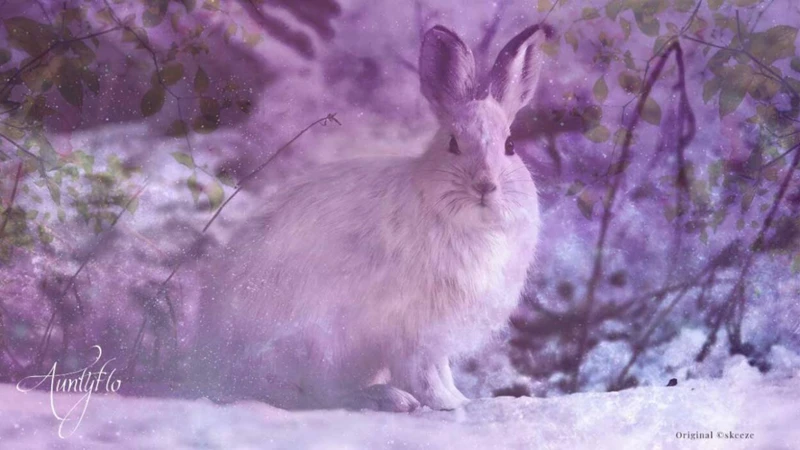
- Comfortable Sleeping Area: Creating a cozy and safe sleeping environment is essential for promoting restful sleep for your bunny. Provide a soft bedding material, such as hay or straw, in a quiet area of their enclosure.
- Consistent Routine: Rabbits thrive on routine, so establishing a consistent sleep schedule can help them feel secure and relaxed. Aim for a quiet and dimly lit environment during their designated sleep time.
- Reduce Noise and Disturbances: Limit loud noises and sudden disturbances in the vicinity of your bunny’s sleeping area. This can include keeping them away from high-traffic areas or using soundproofing measures if necessary.
- Mimic Natural Light: Ensure that your bunny is exposed to natural light during the day and darkness during the night. This helps regulate their circadian rhythm and promotes healthy sleep patterns.
- Provide Enrichment: Mental stimulation is important for rabbits, even during sleep. Offer toys, tunnels, and other enriching activities in their enclosure to keep their minds active and engaged.
By creating a dream-friendly environment for your bunny, you can help promote deep and restful sleep. So, ensure your furry friend has a comfortable sleep space and a peaceful atmosphere to maximize their potential for delightful dreams.
Ensuring Comfortable Sleep for Your Rabbit
- Cozy Sleeping Spot: Provide your rabbit with a comfortable sleeping area where they can feel safe and secure. This can be a cozy bed made of soft, non-toxic bedding material or a specially designed rabbit hideaway.
- Ensuring Darkness: Rabbits are crepuscular animals, meaning they are most active during dawn and dusk. To create a dream-friendly environment, ensure that your rabbit’s sleeping area is dark and quiet. Blocking out excessive light and reducing noise can promote better sleep.
- Avoiding Temperature Extremes: Rabbits are sensitive to temperature changes. Ensure that theirsleeping area is neither too hot nor too cold. Provide appropriate insulation, such as blankets or heat pads, during colder months, and ensure proper ventilation during warmer months.
Subscribe to Our Newsletter
Sign up to receive the latest news and updates.
By creating a comfortable sleep environment, you can help your rabbit get a peaceful and restful night’s sleep. This will contribute to their overall well-being and may even contribute to the positive content of their dreams. Now, let’s explore dream-like behaviors in rabbits and uncover their significance.
Reducing Nighttime Disturbances
Nighttime disturbances can disrupt a bunny’s sleep, potentially affecting their dreams and overall well-being. To create a dream-friendly environment for your rabbit, consider the following measures:
- Noise Reduction: Rabbits have sensitive hearing, so minimizing loud noises during the night can help ensure a peaceful sleep. Consider using soundproofing methods, such as carpeting or acoustic panels, to reduce noise levels in your rabbit’s sleeping area.
- Proper Lighting: Rabbits are crepuscular creatures, meaning they are most active during dawn and dusk. To promote a natural sleep cycle, provide a dimly lit sleeping area at night, preventing any harsh or bright lights from disturbing their slumber.
- Temperature Control: Maintaining a comfortable temperature is essential for your bunny’s sleep. Ensure that their sleeping area is not too hot or too cold, as extreme temperatures can lead to restlessness and discomfort.
- Secure Housing: Providing a safe and secure enclosure for your rabbit can minimize the chances of nighttime disturbances. Make sure the enclosure is escape-proof and free from any potential hazards or predators.
When rabbits can sleep peacefully, their dreams can flourish, allowing them to experience a whimsical world of their own creation. By creating an ideal sleep environment, you can help your bunny enjoy undisturbed nights filled with enchanting dreams.
Understanding Dream-Like Behaviors in Rabbits
- Binky: One of the most enchanting dream-like behaviors in rabbits is the “binky.” A binky is when a rabbit leaps into the air, twists its body, and kicks out its legs in sheer joy. It’s their way of expressing pure happiness and excitement, almost like a dream come true for them.
- Tail Wiggle: While binkies represent joy, a tail wiggle is a sign of contentment in rabbits. If you observe your bunny’s tail twitching or vibrating gently while they are resting or being petted, it indicates a state of relaxation and happiness, akin to a dreamy state of bliss.
These dream-like behaviors give us a glimpse into the emotional experiences of rabbits and shed light on their inner world. By understanding these behaviors, we can deepen our connection with our furry companions and provide an environment that nurtures their well-being.
Binky: A Joyful Dream-Like Behavior
Binky is a delightful behavior often observed in rabbits that resembles a true expression of joy and happiness. During a binky, a bunny will suddenly jump into the air, twist its body, and perform mid-air spins. This dream-like behavior is a common sight among rabbits who are content and feel safe in their environment. It is believed that binkies may be a way for rabbits to release pent-up energy or simply express their sheer delight. The sight of a bunny binking is truly a heartwarming experience for any rabbit owner. So, the next time you see your furry friend gracefully leaping and twirling, cherish the magical moment and revel in the pure joy they radiate.
Tail Wiggle: A Sign of Contentment
When a rabbit wiggles its tail, it is a fascinating behavior that signifies contentment. This adorable display is often accompanied by a relaxed body posture and soft, purring-like sounds. While the exact reason behind this tail wiggle remains unknown, it is believed to be an expression of comfort and happiness. It’s as if the bunny is dancing with joy, expressing their satisfaction with their environment and their overall well-being. Observing this delightful tail wiggle in your bunny can bring a sense of warmth and reassurance, knowing that your furry friend is content and at ease. So, cherish these moments of bunny bliss and embrace the happiness it brings to your bond with your furry companion.
Conclusion
- Unveiling the Mysteries: While we may never fully know if bunnies dream, exploring their sleep cycle, dream-like behaviors, and the similarities to human REM sleep has provided valuable insights into their nocturnal experiences.
- Interpreting Bunny Dreams: Although we can’t directly ask a bunny about their dreams, understanding their behaviors and symbols can give us some clues. Common dream symbols in rabbits include binkies, a joyful dream-like behavior, and tail wiggles, a sign of contentment.
- A Dream-Friendly Environment: Providing a comfortable sleep environment, reducing nighttime disturbances, and ensuring your bunny’s overall well-being can contribute to creating a dream-friendly atmosphere for your furry friend.
In conclusion, while the specifics of bunny dreams remain a delightful mystery, observing their sleep patterns, behaviors, and creating a peaceful environment can enhance their overall well-being. So, let us continue to cherish our adorable bunnies and their potential nocturnal adventures.
Frequently Asked Questions
1. Do rabbits have dreams like humans do?
While we can’t be certain, research suggests that rabbits do experience dreams similar to humans. Their brain activity during sleep resembles patterns associated with dreaming, indicating the possibility of vivid dream experiences.
2. How long do rabbits sleep?
Rabbits are crepuscular animals, meaning they are most active during dawn and dusk. They typically sleep for short periods throughout the day, totaling around 8-10 hours of sleep in a 24-hour period.
3. Can rabbits have nightmares?
It is possible for rabbits to have nightmares. External factors such as loud noises, sudden disturbances, or stressful environments can lead to unpleasant dream experiences for rabbits, just like they can for humans.
4. What are some common dream symbols for rabbits?
When interpreting rabbit dreams, common symbols may include hopping or running, interactions with other animals, digging or burrowing, or munching on their favorite treats. These dream symbols often reflect rabbits’ natural behaviors and instincts.
5. What is REM sleep, and do rabbits experience it?
REM (Rapid Eye Movement) sleep is a phase of sleep associated with vivid dreaming in humans. While rabbits do experience REM sleep, their eye movements during this stage are not as pronounced as in humans.
6. Can rabbits sleep with their eyes open?
Yes, rabbits have a unique ability to sleep with their eyes open. This is a survival mechanism that helps them stay alert to potential threats while still getting some rest.
7. How can I create a dream-friendly environment for my rabbit?
To create a dream-friendly environment for your rabbit, ensure they have a comfortable and secure sleeping area, free from noise and disturbances. Provide them with a cozy bed, appropriate bedding material, and a consistent sleep routine.
8. Why does my rabbit binky in its sleep?
Binky is a joyful dream-like behavior that rabbits exhibit by jumping, twisting, and running around with excitement. It is believed to be a reflection of their contentment and happiness, even in their dreams.
9. Is it normal for rabbits to twitch their tails while sleeping?
Yes, tail twitching is a common behavior seen in rabbits while sleeping. It is often a sign of contentment and relaxation, indicating that your rabbit is having a peaceful dream.
10. Can rabbits sleep in any position?
Rabbits can sleep in various positions, including stretched out, curled up, or on their side. As long as they are comfortable and feel safe, rabbits can choose the sleeping position that suits them best.

